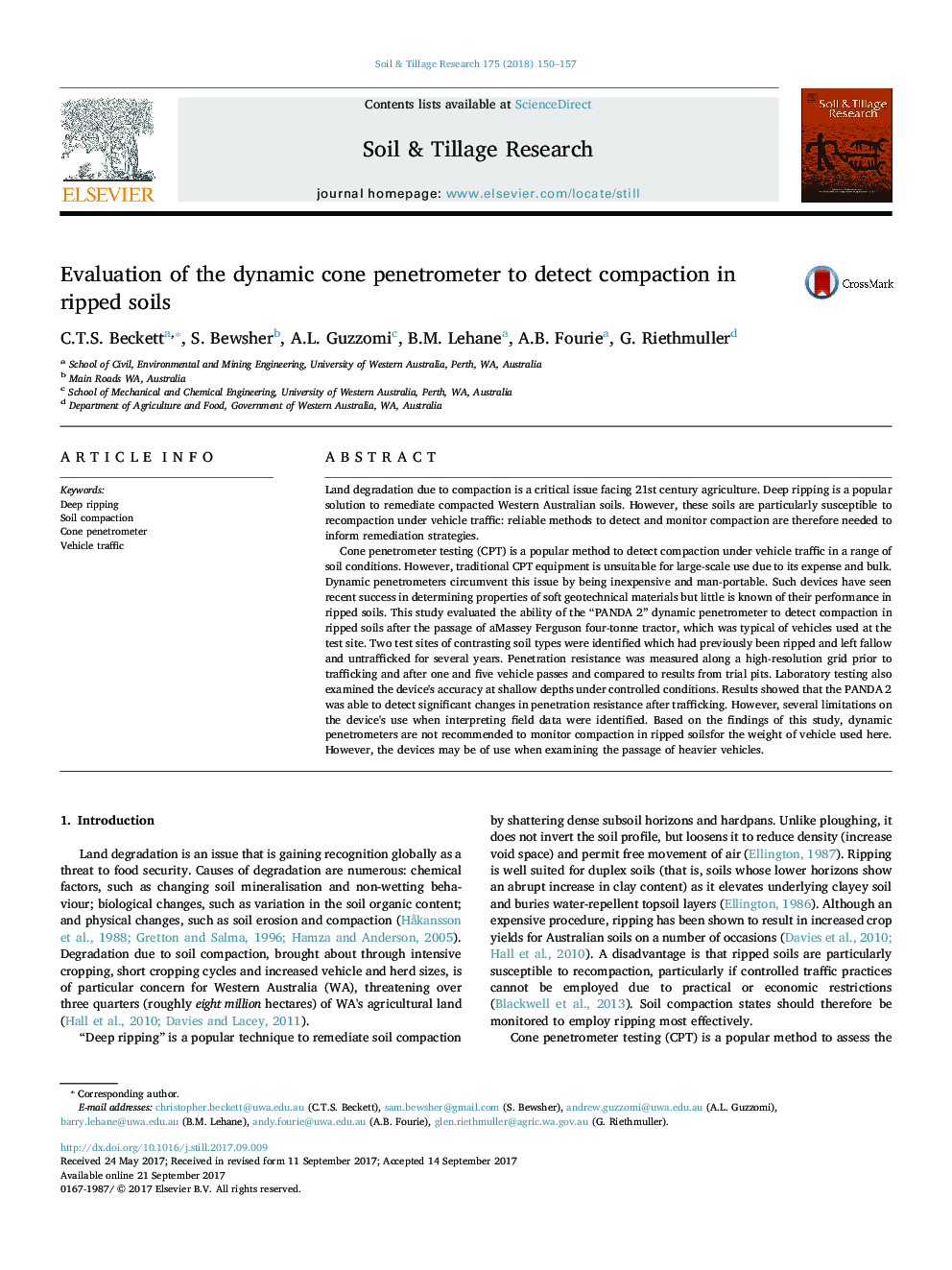| Article ID | Journal | Published Year | Pages | File Type |
|---|---|---|---|---|
| 4927429 | Soil and Tillage Research | 2018 | 8 Pages |
â¢Examined detecting compaction after traffic using dynamic cone penetrometers (DCPs).â¢Penetration resistance variability increased with depth under laboratory conditions.â¢Significant cone resistance changes only found to 200 mm after five vehicle passes.â¢No resistance change for fewer passes or greater depths, contrary to trial pit data.â¢DCPs only suitable for heavier vehicles (than used here) or multiple vehicle passes.
Land degradation due to compaction is a critical issue facing 21st century agriculture. Deep ripping is a popular solution to remediate compacted Western Australian soils. However, these soils are particularly susceptible to recompaction under vehicle traffic: reliable methods to detect and monitor compaction are therefore needed to inform remediation strategies.Cone penetrometer testing (CPT) is a popular method to detect compaction under vehicle traffic in a range of soil conditions. However, traditional CPT equipment is unsuitable for large-scale use due to its expense and bulk. Dynamic penetrometers circumvent this issue by being inexpensive and man-portable. Such devices have seen recent success in determining properties of soft geotechnical materials but little is known of their performance in ripped soils. This study evaluated the ability of the “PANDA 2” dynamic penetrometer to detect compaction in ripped soils after the passage of aMassey Ferguson four-tonne tractor, which was typical of vehicles used at the test site. Two test sites of contrasting soil types were identified which had previously been ripped and left fallow and untrafficked for several years. Penetration resistance was measured along a high-resolution grid prior to trafficking and after one and five vehicle passes and compared to results from trial pits. Laboratory testing also examined the device's accuracy at shallow depths under controlled conditions. Results showed that the PANDA 2 was able to detect significant changes in penetration resistance after trafficking. However, several limitations on the device's use when interpreting field data were identified. Based on the findings of this study, dynamic penetrometers are not recommended to monitor compaction in ripped soilsfor the weight of vehicle used here. However, the devices may be of use when examining the passage of heavier vehicles.
